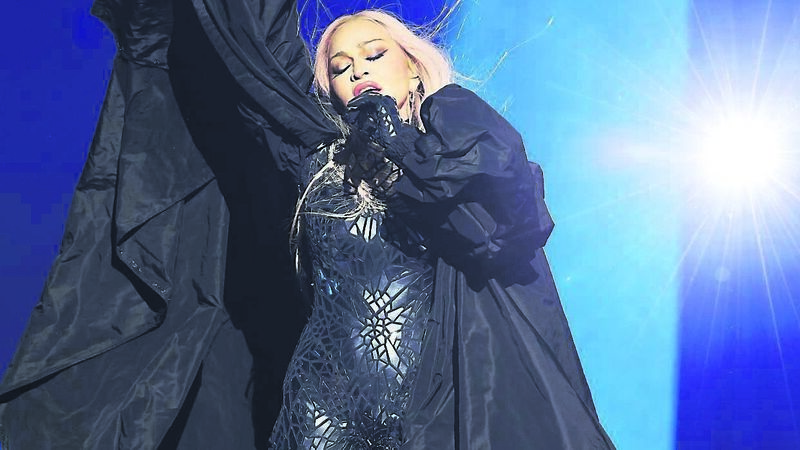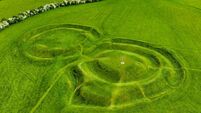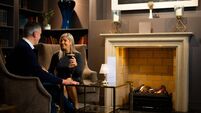Women have been striving to hold back years for centuries

Madonna performs during opening night of The Celebration Tour at The O2 Arena. Picture: Kevin Mazur/WireImage for Live Nation.
You can’t scroll social media on your phone without seeing videos of Madonna, for example, on her mega-tour looking half her age thanks to cosmetic surgery.
We baulked earlier this year when we saw what looked like a botch job on the 60-something pop star’s face. But it was just swelling that eventually went down. Time may not be on Madonna’s side – but the wonders of youth-enhancing procedures are.
Trying to look younger than you are is the raison d’etre of the cosmetic industry, with expensive creams promising to get rid of fine lines. (They often don’t work.) And we are besieged by photos (no doubt filtered) of celebs looking unfeasibly young.
I’m tired of Helen Mirren almost being beatified and described as ‘brave’ for wearing her silver hair long despite being in her seventies. But as a role model, she’s one of the more acceptable ones because she doesn’t seem to have had work done. She may have the locks of a young woman, but she has the lines of a woman of a certain age.
We’re familiar with paintings of Elizabeth 1 of the high forehead in which she has a layer of white make-up on her face. That look became fashionable for Renaissance women, who often used beauty products that were a lot more sophisticated than previously thought.
Art historian, Jill Burke, has just published a book, titled . She and a physicist, Wilson Poon, have been trying out recipes from the 15th to the 17th centuries for beautifying the face, hair and body. To their surprise, the potions, lotions and goo are a lot more advanced than they and the rest of us imagined.
Apparently, it’s not quite true that everything these women used was poisonous, although lead was used.
We’re all interested in hair products. One recipe that Jill discovered from way back is for a conditioner made from mallow, a pink flower. It is used with willow leaves and psyllium seeds. You boil the ingredients together and the result is a goopy substance that you leave on your hair. You only need a small bit and it is supposed to control flyaway hair.
Jill’s research was inspired by a 16th-century Italian book, , by Giovanni Marinello. It was translated into English, French and German and includes over 1,400 recipes, arranged in order of the body part to be corrected.
Other manuals Jill discovered include recipes for lip balm made with rose oil and grated beeswax simmered on a low heat. Fancy this for an eye cream: Honey and egg crushed together. And to make an exfoliator, a simple recipe involved breadcrumbs.
Needless to say, the authors of manuals on beauty and body care were men. They were akin to the self help books of today. They comprised not just recipes for cosmetics but also solutions to everything from fat upper arms and smelly armpits to sagging breasts, stretch marks and bad breath.
These manuals were popular among aristocrats and peasants. The need to look good has never been confined to the upper classes. Women everywhere have always bought into prettification, particularly important in olden times when attracting a husband was most women’s only option. The alternative was a nunnery where make-up wouldn’t have been allowed (or necessary.)
However, some of the recipes were distinctly unappealing often containing animal ingredients. Newts, doves, bats, frogs and chickens that had eaten snakes were used.
Goivanni Marinello recommended ‘three litres of blood of healthy red-headed men no older than 25 or 30’ for skin conditions. To remove body hair, cat faeces was used. Ugh.
The quest to look better than how our unadorned faces actually look has always existed. A survey found the average Irish woman spends around €393 on cosmetics per annum.
Each of us has an average of 22 beauty products. We live in hope!







 App?
App?




